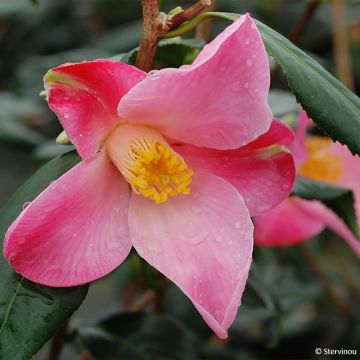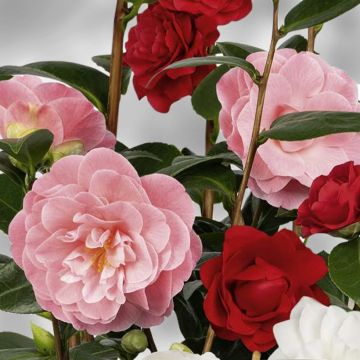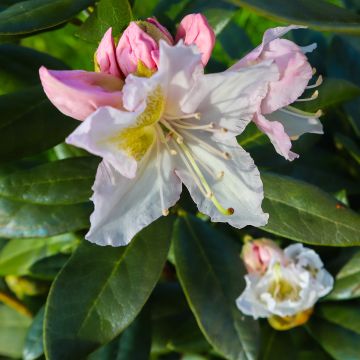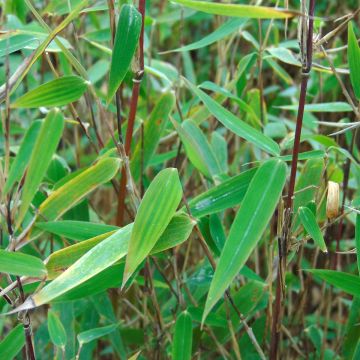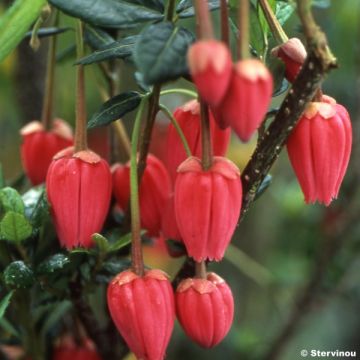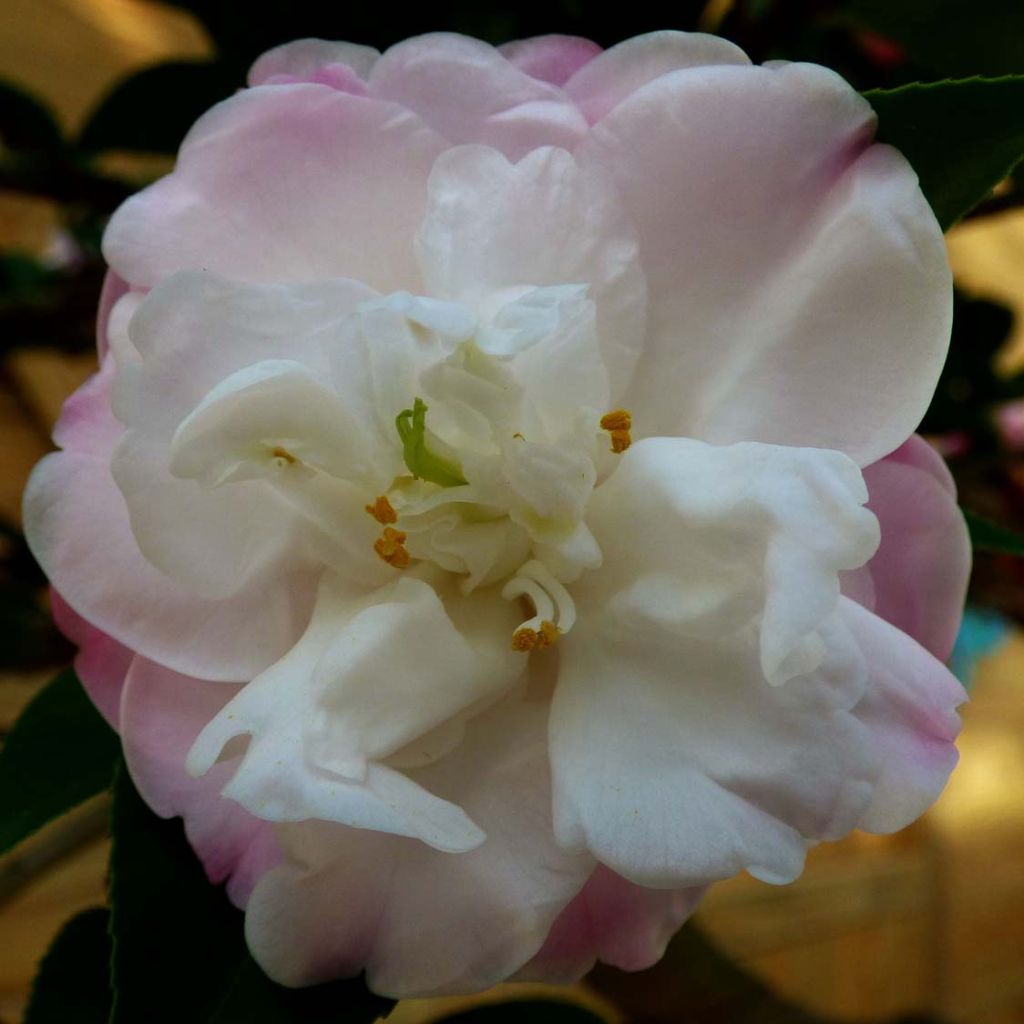

Camellia Cinnamon Cindy


Camellia Cinnamon Cindy


Camellia Cinnamon Cindy


Camellia Cinnamon Cindy
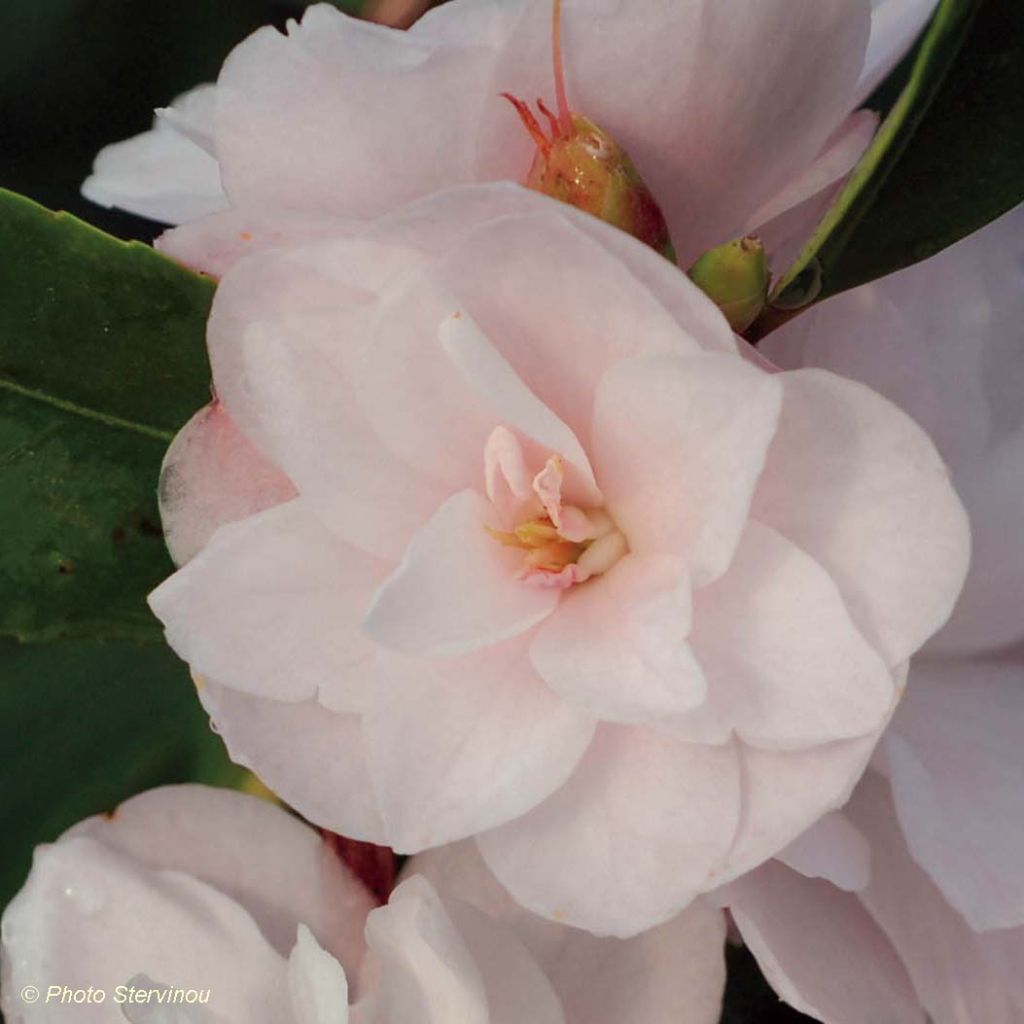

Camellia Cinnamon Cindy
Camellia Cinnamon Cindy
Camellia japonica x lutchuensis Cinnamon Cindy
I had a good harvest this year! Thank you!
Summer, 04/08/2023
This plant carries a 24 months recovery warranty
More information
We guarantee the quality of our plants for a full growing cycle, and will replace at our expense any plant that fails to recover under normal climatic and planting conditions.
From €5.90 for pickup delivery and €6.90 for home delivery
Express home delivery from €8.90.

Does this plant fit my garden?
Set up your Plantfit profile →
Description
Camellia 'Cinnamon Cindy' is a graceful, light, fast-growing variety of camellia, with a thousand almost-white peony-like flowers that are deliciously scented with cinnamon. This bush, dressed in beautiful evergreen foliage, is studded with small double flowers, continuously blooming from January to April. With an elegant habit, this excellent variety tolerates sunny exposures better than others. If you don't normally appreciate the somewhat stiff and artificial look of Japanese camellias, you will surely be seduced by this one!
Hybrid camellias like 'Cinnamon Cindy' belong to the family Theaceae, like the tea plant (Camellia sinensis). They are compact and bushy plants with evergreen foliage that flower from January to April depending on the variety. Less sophisticated than their close relative the Japanese camellia (Camellia japonica), they work well in a small hedge or in ericaceous beds. They prefer an oceanic climate, mild and humid, and non-calcareous soils.
The cultivar 'Cinnamon Cindy', first introduced in the United States in 1974, is the result of cross-breeding between a Camellia japonica ('Ken'yôtai' ) and the botanical species Camellia lutchuensis. It has a free, flexible, upright and conical habit, and its growth is very fast for a camellia: under good growing conditions, its stems can grow up to 1 metre (3 feet) per year. Within 4 years, it forms a bush 2 m (6.5 ft) tall and 1 m (3 ft) wide, sometimes more. This variety blooms from December in mild climates, but more often from February to April. It produces a large quantity of small flowers with 18 petals and 22 petaloids, 3-4 cm (1.2-1.6 in) wide and 2.5 cm (1 in) deep, grouped in small clusters in the axils of the leaves, all along the branches. The rose-coloured flower buds open into pale pink flowers that quickly fade to white. Late in the blooming process, the flower reveal sa few stamens with orange anthers at its centre. Their subtle, spicy and sweet fragrance evokes that of the botanical camellia lutchuensis. The flowers detach from the branches before wilting, forming a snow of white petals at the base of the bush.
At budburst, the young leaves are coppery and gradually turn a rather dark olive green. They are thin, oval-shaped and pointed, measuring no more than 5 cm (2 in) in length and have toothed edges. Hardy down to -14C, this variety can be grown in partial shade, but also in full sun.
Planted in a mild and humid garden with an oceanic climate, Camellia Cinnamon Cindy will thrive. It does not appreciate dense shade and tolerates a sunny site that is not scorching quite well. Wherever the winter is relatively mild, it can be planted in the garden as a solitary specimen or in combination with other acid-loving plants (Rhododendron, azaleas, Hydrangea, Hamamelis, Pieris...) in a shrub bed. Its wild plant appearance and delicate flowering work wonders in a natural or romantic garden, with a Chimonanthus praecox for example. You can also plant spring bulbs (daffodils, tulips, wood hyacinths) or autumn bulbs, such as colchicum or Naples cyclamen, around its base. In colder regions, it can be grown in a container on the balcony or terrace, and brought indoors to a veranda or cold greenhouse during the flowering period.
Report an error about the product description
Camellia Cinnamon Cindy in pictures




Plant habit
Flowering
Foliage
Botanical data
Camellia
japonica x lutchuensis
Cinnamon Cindy
Theaceae
Cultivar or hybrid
Other Traditional Camellia
Planting and care
Camellia Cinnamon Cindy likes a fairly shady location sheltered from cold and drying winds. You can grow it in full sun but the roots must remain cool. Plant in a fresh, humus-bearing, acidic, and well-drained soil. Do not plant the bush too deeply; the top of the root ball should be covered with 3 cm (1.2 in) of soil. In winter, cover it with a 5 to 7 cm (2 to 2.8 in) thick mulch composed of leaf compost and crushed bark. Beware of late frosts that can damage the flowers and buds. During dry periods, water the bush to prevent the dropping of flower buds.
Planting period
Intended location
Care
-
, onOrder confirmed
Reply from on Promesse de fleurs
Evergreen shrubs
Haven't found what you were looking for?
Hardiness is the lowest winter temperature a plant can endure without suffering serious damage or even dying. However, hardiness is affected by location (a sheltered area, such as a patio), protection (winter cover) and soil type (hardiness is improved by well-drained soil).

Photo Sharing Terms & Conditions
In order to encourage gardeners to interact and share their experiences, Promesse de fleurs offers various media enabling content to be uploaded onto its Site - in particular via the ‘Photo sharing’ module.
The User agrees to refrain from:
- Posting any content that is illegal, prejudicial, insulting, racist, inciteful to hatred, revisionist, contrary to public decency, that infringes on privacy or on the privacy rights of third parties, in particular the publicity rights of persons and goods, intellectual property rights, or the right to privacy.
- Submitting content on behalf of a third party;
- Impersonate the identity of a third party and/or publish any personal information about a third party;
In general, the User undertakes to refrain from any unethical behaviour.
All Content (in particular text, comments, files, images, photos, videos, creative works, etc.), which may be subject to property or intellectual property rights, image or other private rights, shall remain the property of the User, subject to the limited rights granted by the terms of the licence granted by Promesse de fleurs as stated below. Users are at liberty to publish or not to publish such Content on the Site, notably via the ‘Photo Sharing’ facility, and accept that this Content shall be made public and freely accessible, notably on the Internet.
Users further acknowledge, undertake to have ,and guarantee that they hold all necessary rights and permissions to publish such material on the Site, in particular with regard to the legislation in force pertaining to any privacy, property, intellectual property, image, or contractual rights, or rights of any other nature. By publishing such Content on the Site, Users acknowledge accepting full liability as publishers of the Content within the meaning of the law, and grant Promesse de fleurs, free of charge, an inclusive, worldwide licence for the said Content for the entire duration of its publication, including all reproduction, representation, up/downloading, displaying, performing, transmission, and storage rights.
Users also grant permission for their name to be linked to the Content and accept that this link may not always be made available.
By engaging in posting material, Users consent to their Content becoming automatically accessible on the Internet, in particular on other sites and/or blogs and/or web pages of the Promesse de fleurs site, including in particular social pages and the Promesse de fleurs catalogue.
Users may secure the removal of entrusted content free of charge by issuing a simple request via our contact form.
The flowering period indicated on our website applies to countries and regions located in USDA zone 8 (France, the United Kingdom, Ireland, the Netherlands, etc.)
It will vary according to where you live:
- In zones 9 to 10 (Italy, Spain, Greece, etc.), flowering will occur about 2 to 4 weeks earlier.
- In zones 6 to 7 (Germany, Poland, Slovenia, and lower mountainous regions), flowering will be delayed by 2 to 3 weeks.
- In zone 5 (Central Europe, Scandinavia), blooming will be delayed by 3 to 5 weeks.
In temperate climates, pruning of spring-flowering shrubs (forsythia, spireas, etc.) should be done just after flowering.
Pruning of summer-flowering shrubs (Indian Lilac, Perovskia, etc.) can be done in winter or spring.
In cold regions as well as with frost-sensitive plants, avoid pruning too early when severe frosts may still occur.
The planting period indicated on our website applies to countries and regions located in USDA zone 8 (France, United Kingdom, Ireland, Netherlands).
It will vary according to where you live:
- In Mediterranean zones (Marseille, Madrid, Milan, etc.), autumn and winter are the best planting periods.
- In continental zones (Strasbourg, Munich, Vienna, etc.), delay planting by 2 to 3 weeks in spring and bring it forward by 2 to 4 weeks in autumn.
- In mountainous regions (the Alps, Pyrenees, Carpathians, etc.), it is best to plant in late spring (May-June) or late summer (August-September).
The harvesting period indicated on our website applies to countries and regions in USDA zone 8 (France, England, Ireland, the Netherlands).
In colder areas (Scandinavia, Poland, Austria...) fruit and vegetable harvests are likely to be delayed by 3-4 weeks.
In warmer areas (Italy, Spain, Greece, etc.), harvesting will probably take place earlier, depending on weather conditions.
The sowing periods indicated on our website apply to countries and regions within USDA Zone 8 (France, UK, Ireland, Netherlands).
In colder areas (Scandinavia, Poland, Austria...), delay any outdoor sowing by 3-4 weeks, or sow under glass.
In warmer climes (Italy, Spain, Greece, etc.), bring outdoor sowing forward by a few weeks.





































